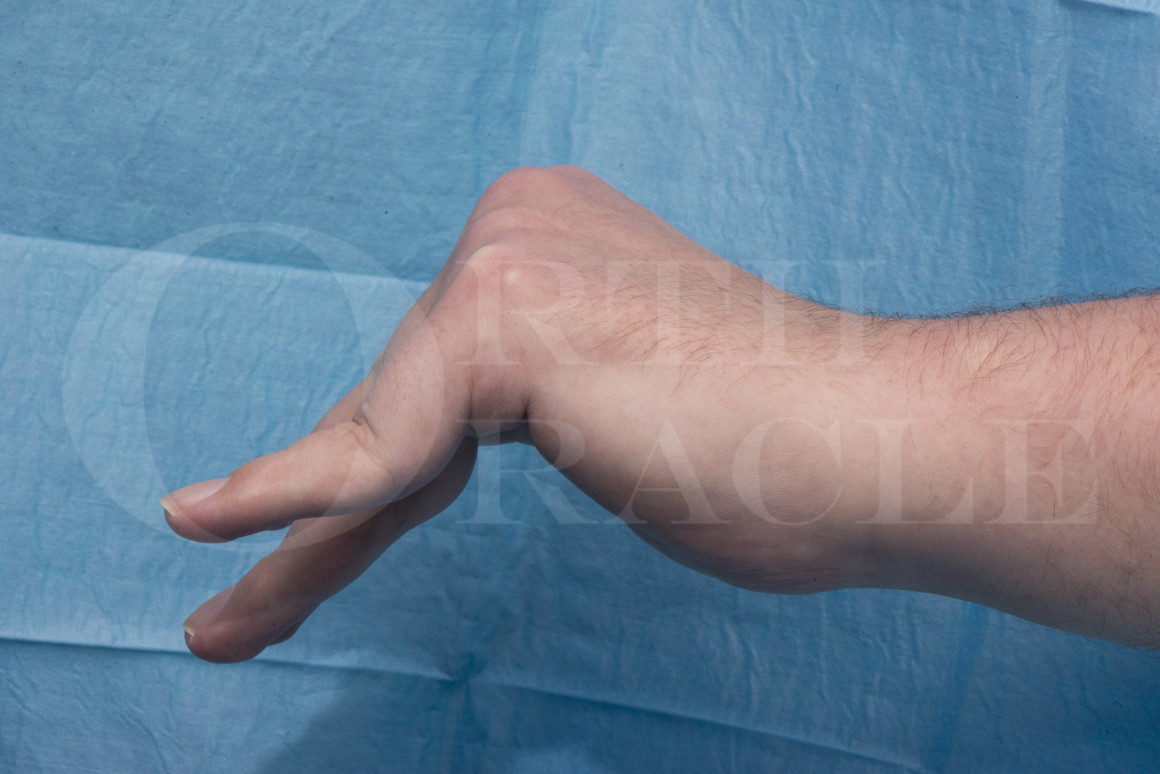Intrinsic release of the hand for Cerebral palsy contracture
Overview

Subscribe to get full access to this operation and the extensive Upper Limb & Hand Surgery Atlas.
Learn the Intrinsic release of the hand for Cerebral palsy contracture surgical technique with step by step instructions on OrthOracle. Our e-learning platform contains high resolution images and a certified CME of the Intrinsic release of the hand for Cerebral palsy contracture surgical procedure.
Cerebral palsy is the result of a non-progressive insult to the developing brain, the manifestations of which may change with skeletal growth. There are four main clinical presentations: spastic, athetoid, ataxic and mixed. Spastic cerebral palsy may be hemiplegic, diplegic. quadriplegic or monoplegic in terms of limb involvement. Spasticity is characterised by hyper-excitability of the muscle stretch reflex. This spasticity impairs voluntary use of the limb and there is commonly poor recruitment of antagonist muscle groups. There is often temporal variation in spastic tone. The case prrsented is one of spastic cerebral palsy.
The action of the spastic muscles on the growing skeleton may result in torsional skeletal deformity, with rapid progression at the time of maximum skeletal growth. If untreated this muscle spasticity eventually can result in myostatic shortening with postural joint deformities and eventually joint contractures.
The management of spastic cerebral palsy involves a number of disciplines and many modalities. Physiotherapy to maintain joint and muscle range of motion, splints to preserve joint position, serial splintage to improve a joints range of motion, chemo-denervation to reduce muscle tone, surgical denervation using hyper selective motor neurectomy, myotendinous lengthening procedures, joint releases, corrective joint fusions, and tendon transfers. Different procedures may be used in the same limb as a part of multilevel surgery, or at different times depending on the severity of the spasticity and postural deformity.
The aims of surgery are to improve the functional status of the limb or in non-functional limbs to improve posture and hygiene. The case presented has had previous surgery for a severe elbow contracture and flexion contracture of the wrist and fingers. The operations included an elbow release through a medial incision preserving the tight skin in the antecubital fossa. This also allowed selective denervation of the brachialis muscle. An FDS to FDP tendon lengthening operation with a z-lengthening of FPL. This allowed the wrist to return to a neutral alignment and opening of the clenched digits. The limb remained non-functional with tight flexion deformities of the MCP joints and adducted fingers causing hygiene issues.
In severe intrinsic contractures that cannot be corrected after intrinsic release, MCP joint releases with or without MCP joint arthroplasties may be required.
The case presented is courtesy of Mike Craigen MBChB, FRCS( Tr & Orth), Consultant Orthopaedic Hand and upper limb Surgeon, and Paul Malone MBChB, FRCS(Plast), Fellow in Hand and upper limb surgery.
Author: Rajive Jose FRCS(Plast) Dip Hand Surg UK, Consultant Hand and Plastic Surgeon
Institution: The Queen Elizabeth Hospital, Birmingham, Uk.
Clinicians should seek clarification on whether any implant demonstrated is licensed for use in their own country.
In the USA contact: fda.gov
In the UK contact: gov.uk
In the EU contact: ema.europa.eu



















